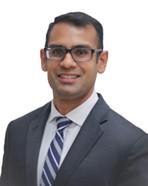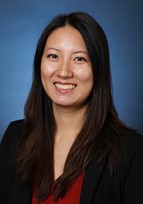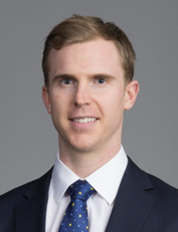By Drs. Jackie Chen, Brian Kurtz, Mishan Rambukwella
Through our medical training, we’ve come to realize that there is more to the practice of medicine than just the patient encounter, especially in the field of anesthesiology. Anesthesiologists are uniquely positioned in hospital ecosystems in a way that allows us to interact with multiple specialties and departments to advance patient care. Therefore, obtaining an understanding of “non-clinical” yet relevant factors (such as organizational culture, burnout, legislative issues, change management, and reimbursement) and how they affect our specialty is vital to our professional growth and development as future leaders in this field.
In one of the meeting’s closing sessions addressing physician burnout, Dr. Jesse Ehrenfeld highlights that physicians are feeling a loss of autonomy as power is slowly being tipped away from physicians in favor of larger health systems and organizations. Citing the article Why Healthcare Workers are Quitting in Droves, he noted that many physicians are struggling to bridge the gap between the noble ideals of medicine and the realities of its business, requiring many individual physicians and smaller groups to make compromises to best serve their patients. Ultimately, the COVID-19 pandemic pushed many people past the limits of these compromises, resulting in our shrinking medical workforce. In the subsequent Q&A discussion, Dr. Ehrenfeld proposed that one way to help increase physician autonomy and mitigate the increasing burnout we all face, particularly in anesthesiology, is by stepping into leadership roles through which we can advocate for our patients and profession. Given the high clinical demands of residency, it is not always possible for leadership and management principles to be taught in residency as part of individual programs’ formal curricula. As current residents at various levels of training, we are extremely grateful that the CSA is able to fulfill this need and share this commitment to leadership development. Below are some of our individual perspectives and takeaways from the ASA Advance 2024 meeting.
Mishan’s Perspective and Takeaways

Mishan Rambukwella, UCLA, CA-2/PGY-3
Having previously worked as a management consultant, I became acutely aware of many problems affecting healthcare systems and physicians that were poorly handled by non-clinician leaders. After seeing many conflicts arise and problems go unsolved, I quickly learned that there was a lack of clinical leadership and management training in medicine. As such, I decided to pursue an MBA in healthcare management while in medical school to learn about organizational behavior to help supplement my clinical training and bridge the gap between clinicians and administrators when it came to making decisions that affect physicians and patient care.
For me, some of the meeting highlights included the sessions on Promoting Wellbeing through Conflict Resolution, Building a Culture of Change, Leadership Self-Development and Coaching, and Addressing Physician Burnout and Creating a Strong Team Culture. Learning about the different types of conflict (ie, task and process vs. relationship conflict) that occur in the OR, and communication strategies that could be used to identify and de-escalate these conflicts is something that I am actively trying to incorporate into my practice. Hearing from experts, such as Dr. Agarwal and Dr. Cheng, discussing their experiences was truly impactful as a trainee. In the session on Building a Culture of Change, Dr. Duggan took a deep dive into the psychology of change and cognitive behavior, analyzing how employees can be either resistant or ready to change. Practically, she also discussed some tactics leaders can adopt to help guide people along the journey of change and how the concept of justice can be used to help manage people’s emotions in response to the uncertainty that comes with change.
The sessions on Leadership Self-Development and Addressing Physician Burnout particularly resonated with me given my prior experiences and training. Hearing Drs. Zvara, Hill, and Lawson discuss why doctors, especially anesthesiologists, need leadership skills was a nice reminder of our unique role as a physician in a patient’s care journey: anesthesiologists operate at the intersection of many medical specialties, coordinate multidisciplinary perioperative teams, and synthesize multiple data inputs to prioritize patient safety. In the session on Addressing Physician Burnout, Drs. Ehrenfeld and Harter discussed some of the current data and trends regarding the anesthesiology workforce and trainee pipeline. The data show a stark reality of a shrinking medical workforce and a surge of burnout, partially attributed to the COVID-19 pandemic. At the resident level, a 2022 survey found that 24% of respondents were at high burnout risk and 15% screened positive for depression. Factors increasing the risk of burnout included working over 70 hours per week and taking 7 or more calls per month.
Given our ever-evolving healthcare landscape and the current state of the anesthesiology workforce, leadership training for the next generation of anesthesiologists is needed now more than ever. I’m extremely thankful for the CSA’s commitment to this effort and for their sponsorship to attend the ASA Advance 2024 Meeting to learn how I can play a small role in these ongoing efforts.
Jackie’s Perspective and Takeaways

Jacqueline Chen, UC Davis Medical Center, CA3/PGY4
My goal in attending the ASA ADVANCE Conference was to learn about the practice management side of anesthesiology. The first session I attended was “Building and Sustaining Partnerships with the C Suite”–and while the topic was very far removed from what I anticipate to encounter in my early career, the overarching theme of engaging the entire hospital system and working on aligning the goals of the C suite, finances of the hospital, the anesthesiology group, and quality of patient care is a goal any practicing anesthesiologist could work towards.
The second session focused on the billing and coding aspects of Anesthesia practice management. That session focused on the Relative Value System Update Committee (RUC), which is a multi-specialty committee that makes recommendations to the federal government (Medicare) on how to value physician services, and the development of RVUs. Although anesthesia services get paid differently compared to other specialties, it is an open secret that anesthesia has not been valued quite as highly as other physician services in the eyes of CMS. A key point in the session touched on surveys on anesthesia services that are sent out periodically that help the RUC and CMS understand the amount of work it takes to provide anesthesia, and completion of such surveys are one of the best ways we can advocate for fair reimbursement.
The third session covered “Professional Liability: Things every Anesthesiologist should know”. Learning about the main 4 elements of malpractice: Duty to Care, Breach of Duty, Injury, and Causation/Damages, along with what steps should be taken immediately should anyone get roped into a professional liability situation is incredibly helpful as I head towards the end of residency training. In addition, I also learned about the ASA expert witness committee to prevent false expert witness testimony motivated by financial compensation. Those found by ASA to be partaking in false expert witness work could be sanctioned by ASA.
On the final day, I finished off my time at ASA ADVANCE with an “Innovative Solutions to Anesthesia Workforce Shortage” session. It was highlighted that despite medical student allure of Anesthesiology being a part of the ROAD specialties, anesthesiologists are actually one of the most burnt out specialties with the lowest reported career fulfillment. As a result, anesthesiologists also have the highest intention to leave the profession across all of the physician specialties. One possible solution mentioned is to create more pathways for anesthesiologists to get involved in the administrative side of the hospital for higher potential career satisfaction.
Brian’s Perspective and Takeaways

Brian Kurtz, St. Joseph’s Medical Center, CA-3/PGY-4
Given the ever-expanding volume of clinical information anesthesiology residents must digest to perform well on in-training exams and written boards, it’s understandable that formal residency didactics tend to focus on the concrete sciences. However, the current landscape facing new graduates of increasing case volumes managed by an understaffed and often overstretched workforce, as well as the increasingly competitive anesthesia economy battling falling reimbursements and ballooning labor costs, requires that future leaders offer more than just clinical expertise. Attending the ASA ADVANCE conference affords residents the opportunity to expand their exposure to OR management principles, learn about anesthesia business practices, and create networking connections that may prove beneficial in their career development.
Two sessions that emphasized the need for a data-driven, more organized approach to operating room scheduling and coverage were, “Anesthesia Staffing Models: Optimization, Cost Analysis and Practicality” and “Basics of Operating Room Management”. Faced with the reality that many sitting in OR and hospital leadership positions are non-clinicians or inexperienced with the expertise required to manage operating rooms, data becomes increasingly vital to advocate for anesthesia resources. Operating rooms account for approximately 50-70% of hospital margins, with anesthesia services accounting for a significant proportion of OR labor costs. To demonstrate utility and added value to the hospital, using EMR systems to track advanced metrics more sophisticated than just first case start times and room turnover durations can demonstrate how efficient staffing models and room utilization can improve the accounting bottom line. For example, Dr. Cynthia Wells in “Basics of Operating Room Management” demonstrated the benefits of analyzing OR staff utilization curves to then create smarter block scheduling strategies and curb the cost of under- and over-utilized OR time. Collaboration between the anesthesia department and a hospital clinical analytics team is a promising opportunity for continual improvement.
Despite the well-known challenges facing our specialty, the session entitled “Innovation and Big Thinking for Anesthesia in 2030” offered a glimpse of how emerging technologies can begin to address these difficulties and advance patient safety. The speakers highlighted several potential developments including AI-assisted hemodynamic management that can predict and prophylactically treat hypotension by automatically adjusting fluid and vasopressor requirements. Advanced monitoring techniques may be able to alert a supervising physician anesthesiologist of developing changes allowing for earlier diagnosis and prevention of potential complications. Interestingly, the speakers were careful to emphasize that smart technologies will not replace the human clinician, but physicians who are resistant to them may struggle to adapt and remain at the forefront of the field.
Although anesthesiology residents were not the most populous demographic at ASA ADVANCE, I highly recommend the conference to any resident or trainee who is interested in learning about the business of anesthesia and the many opportunities for leadership roles and quality improvement. Interacting with clinicians from across the country as well as our fellow California resident cohort emphasized that we all share a desire for positive changes within our specialty. We would like to thank the California Society of Anesthesiologists for their support and the opportunity to attend this year’s conference in Las Vegas.
